from Indybay
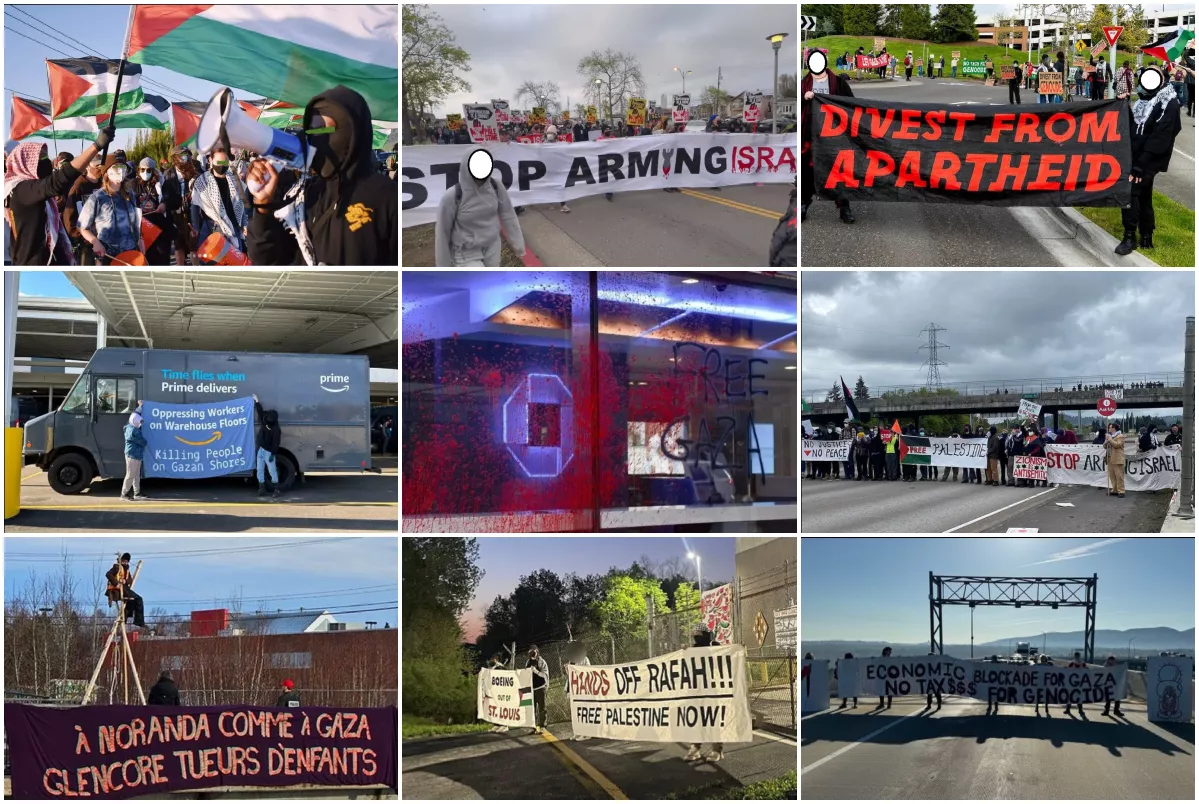
Submission
On the evening of May 30th we took vengence on the machinery that is laying astroturf in the Kingsessing Rec center in West Philadelphia. We hit 3 machines, pouring sugar in the gas tanks, painting windows, and taking an impact drill to all of the tires (something that is incredibly easy and effective).
Astroturf is an environmental diaster as well as a public health concern & we reject its creation and its presence through out our city, at this site and the FDR meadows. Modern convenience at the the sacrifice of Earth and the health of aniamls (including children) will be fought back against. May this be a warning to all redevelopment projects that offer convenience to some while continuing to ravage the black and brown communities who take in the most pollution from redevelopment and benefit little to none.
Land defense is not only about pushing back against the destruction of green spaces but resistence to gentrification and settler mentality. Fighting the aesthetic desires of the rich & the continuation of a society of modernities that alienates us from each other,Earth & feeds the beast of capitalism. We will be back.
In the Lenape language “Kingsessing” means “a place where there is a meadow” May grass prevail and the industrial sports complex perish! May the youth be safe from further contaminates in their limited play spaces.
Also fuck Caterpillar industries! These bastards sell construction equipment to Israel to bulldoze homes in Palesitne.
We are anti-turf, anti-terf
Almost a month later, we have noticed that all the rolls of astroturf have been removed from the Kingsessing Rec Center as well as any machinery. Without more research, we can only assume the action we took has stopped construction for the time being and scared developers of further sabotage.
Join us as we avenge the FDR meadows, Haddington Woods (construction is starting up again on the Golf Course), Bartrams North & all the sall but precious greenery in between. Keep it wild sluts.
Submission
Today I walked around UPenn and obscured the screens of PPA parking meters and drew all over the bathroom walls of the Penn Bookstore.
Fuck them for not divesting from Israel.
Fuck them for shutting down the encampments.
Fuck all the Zionists at UPenn.
from Instagram




Submission
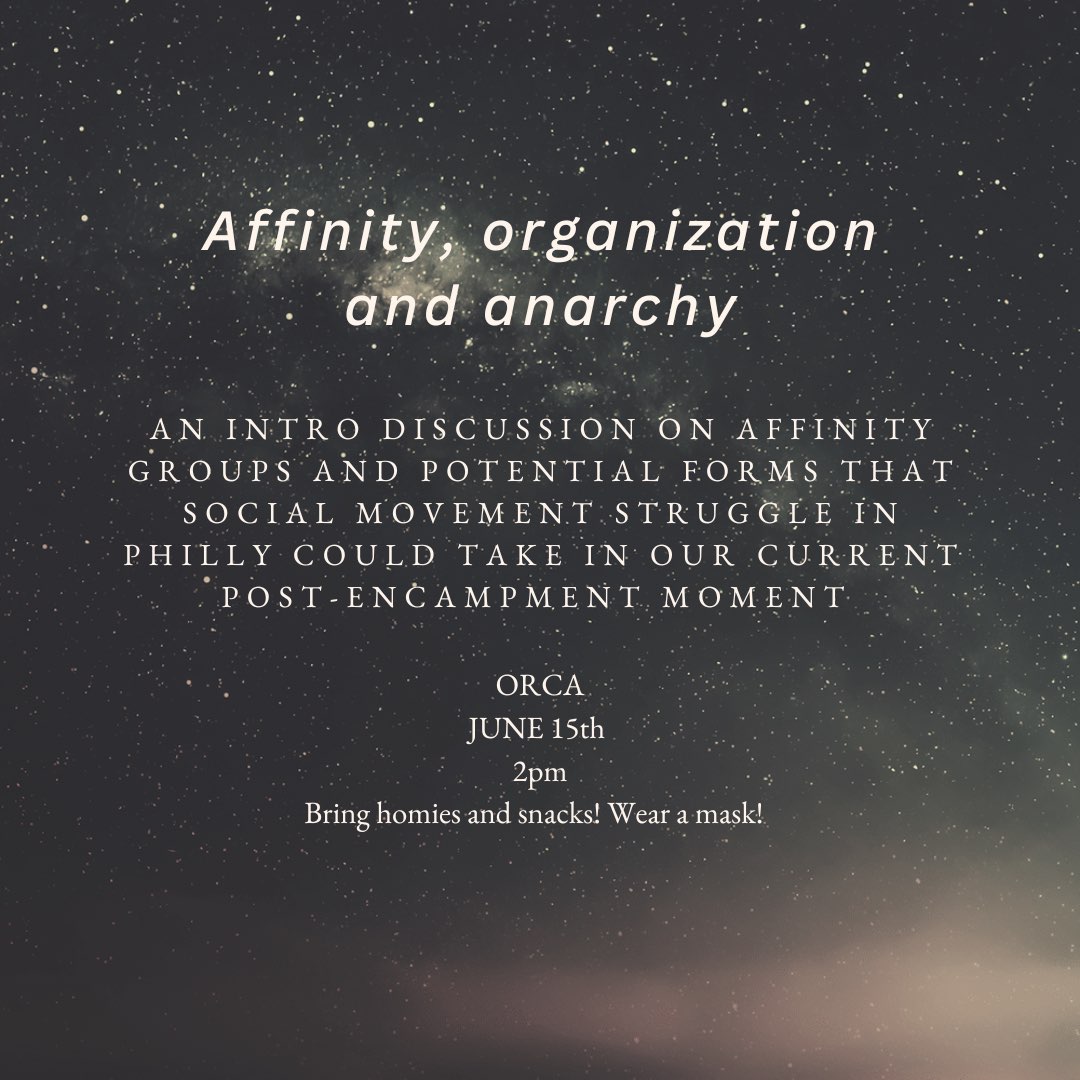
Submission
Early morning yesterday, a small group of intersectional anarchists repurposed surplus materials from the now-defunct university encampment. Set up in the park was smooth and several tents were pitched to establish a presence. As an autonomous action, all of the gear onsite was explictly available for anyone who would care to put them to use. Talking with street-based neighbors it was quick to come to consensus that people wanted to share food, water, cigarettes, commiserate, and rise above the horrors of living under settler-colonialism.
As the sunrise welcomed in the day, more neighbors would greet each other and invite one another to share, some would leave and come back with coffee, bring chairs, and supply coolers with the trust that these items would help sustain an accessible communtiy hub in the park. The banners spoke for themselves: Land Back, Free Palestine, Free the Congo, Resistance is Justified. Signage addressed the elephant in the room while folks on the ground could speak/act freely and not be caught up in chanting or marshaling to cultivate a protest environment, which allowed for community engagement to take center stage.
This proved most interesting when one neighbor passing by pointed out a banner and stated “I’m not down with that”, then was promptly welcomed to engage conflictually. One anarchist invited him over for coffee and a smoke, and It wasn’t long before it became apparent this person wasn’t critiquing the international support, but rather the “trending-political-issue” phenomena that this country subjects its people to every election cycle. He spoke to the horrors – the devastation of the meadows, the chronic displacement in Kensington, and murdered children here in so-called Philadelphia.
The solidarity lines between the overt genocide abroad and the covert genocide at home became clearer amongst the group. With gratitude and a better understanding of each other, the passer-by left to a different section of the park and the autonomous zone carried on with distributing free goods. When anarchists were inevitably confronted by a pig who drove onto the lawn, this same conflictual neighbor came back to this intersectional group to stand against the intimidation and together, as a community, they turned the pig away. By engaging with each other through conflicts, we are ALL empowered and live WE KEEP US SAFE in real time.
In the afternoon, more people would come and go, some anonymously and others more plainly to be recognized by longtime neighbors & loved ones. Building familiarity proved valuable in practicing trust, with housed neighbors eager to know what resources were needed, offering use of their bathrooms to ANYONE who needed relief, and many were quick to make note of hostile zionists in the neighborhood known to harass.
The make-up of the pop-up distro in the park would change depending on who was able to stick around. Some folks more used to hierarchal organization found it difficult to self-start tasks or ask for direction from people they considered unaffiliated, whereas more horizontal-based practitioners would collaborate on supply runs and sign making, all while outreach with neighbors continued through lunchtime.
Houseless folks who wanted them got tents, hungry people got food, and even some student encampment folks found it reinvigorating to be in an occupation-style protest that materially benefited the community it was taking place in.
By the early evening, the cops escalated as the park’s belligerently gentrified beer garden installation began to open – a blight in the neighborhood that has been spoken on as a true disruption each season it has been erected. The juxtaposition of an autonomous and free exchange of resources next to a gated off colonizer project was noted as a bitter irony amongst the group throughout the night.
No laws were broken by this impromptu, picnic-style meet up apart from a technical park code violation that forbids the use of tents without a permit, which is to be handled by the department of parks and rec and NOT the PPD. Folks participating in the distro stayed together while friendly faces filmed the police from other sections of the park. A park ranger with several dozen pigs as enforcers confront folks willing to talk to them about the scene, and after back and forth dispute tents were deconstructed so that the resource exchange could continue without escalating interference from the state.
People continued coming and going, some held it down all day while others came in waves & shifts. Folks on the ground discussed how warped AmeriKKKa’s priorities are when nearly a trillion dollars (yes actually) are funneled towards proxy wars and people are literally in the park sharing what they could to sustain one another. Using each other’s experiences with oppression to identify their chains, this intersectional group of neighbors asked themselves what could be achieved in the park with the supplies and knowledge available to them.
An older neighbor and communist remarked that the people in the neighborhood are sick and tired, some nearly so much they can’t fight like they used to, some too scared to talk to their neighbors because fascism looms heavy. Another person noted how that feeling is what keeps them curious, reminds them to be sensitive whenever possible, and that we’re kept humble in our efforts by reminding each other of the stakes.
But that night in the park, those gathered spoke to a future where a person could feel empowered by the presence of another, where one could feel safe to walk home alone at night, and when one person is threatened for sleeping outside ALL their neighbors can stand with them and PROTECT them. Everyone who came to the park that day showed courage by taking the chance to know each other better despite the horrors of the world.
Even though the folks who stayed overnight were forced to clear out by the morning, a final act of solidarity with some recently-decamped university protestors & neighbors ensured that no essential distro materials were seized by the pigs and can be distro’d again! And again! And again! Nothing the state can do will ever undo the steps taken towards liberation over the past day or ever. We are, each one of us, immensely powerful.
What was learned? People need things, people are eager to give things, and people need people. Approaching resources from an abundance mentality keeps us nourished in all ways. 24+ hours of using the park to share with each other came from fostering conversations about what we needed in light of what we saw before us: the death of empire in its final throes to try and keep us too afraid of one another to realize the struggle is intersectional. Approaching public spaces with intention, making genocide un-ignorable in the most mundane parts of everyday life is essential.
People in the park out against genocide offering resources and engaging in conversation with their neighbors can be regular. Horizontal decision making is a daily practice, and neighbors understood there was no “org” because they know anarchists live here. What demands could have been made? Distro-ing will continue so long as there is a need. When will there no longer be a need? When we are all free. We are all ungovernable. May we all move a few steps closer today. Let’s hope to cross paths in the park again!
Be it with a crowbar, a tent, or a challenge + and open heart…we must liberate each other.
FTP, Palestine is almost free
Sincerely, your neighbor says
from Unicorn Riot
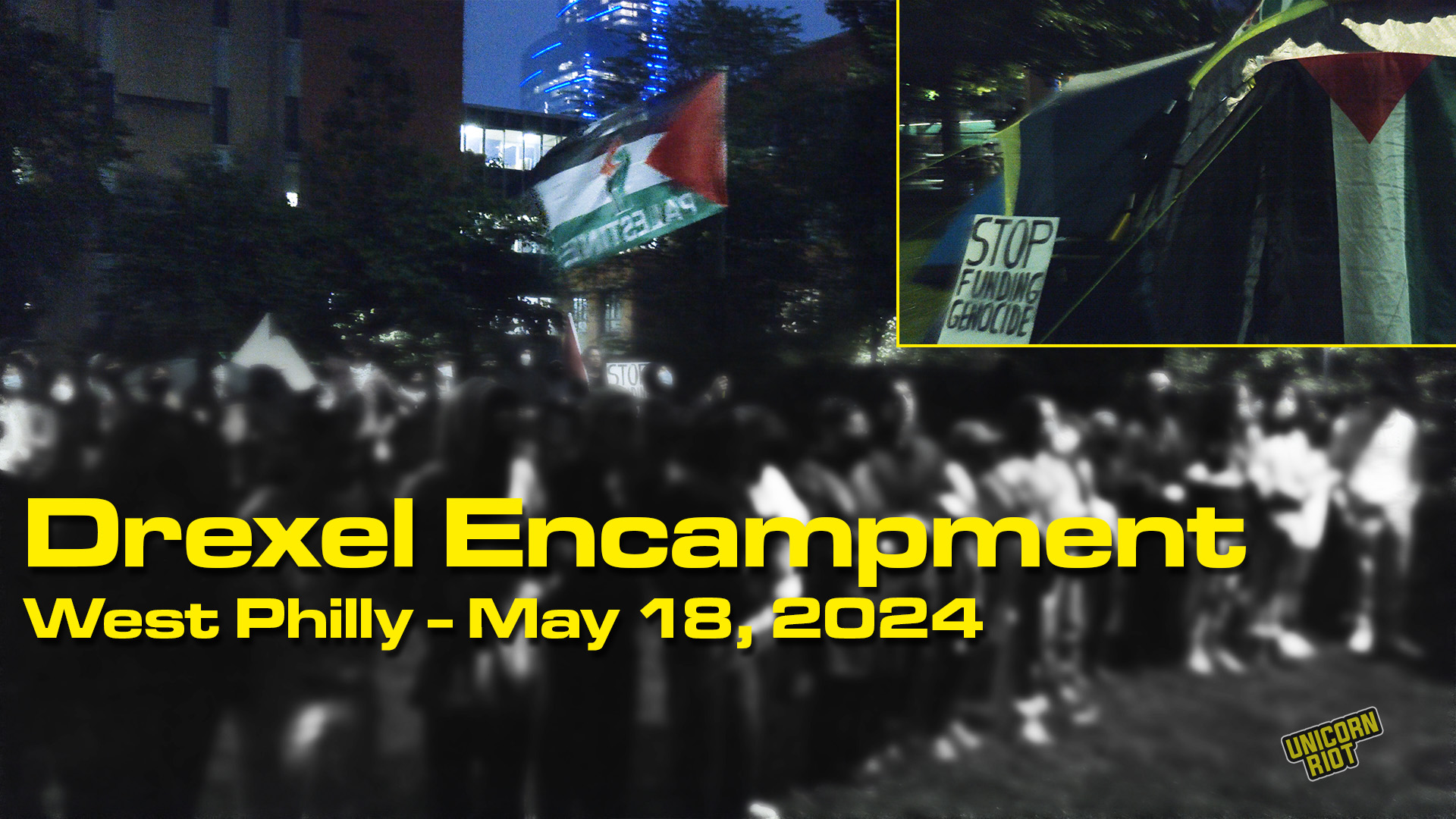
Philadelphia, PA — Students at Drexel University established an encampment in support of divesting from Israel on May 18, following a rainy Nakba Day commemoration march from Center City that started around 4 p.m. Philadelphia and Drexel police officers quickly surrounded the encampment with a ring of metal barricades and largely barred additional people from entering; this was apparently at the orders of Drexel’s campus police chief.
There was a brief struggle over the metal barricade components, and at one point an officer brandished a Taser at the crowd but was pulled back by another, shortly after our reporters got onsite. As of late Monday the encampment was still in place.
Our livestream from inside the barricade ring ran for almost 3 1/2 hours until shortly before midnight Saturday (YouTube). The night before, nearly 20 demonstrators were arrested just blocks away at the UPenn campus which we also streamed live. Students and other observers we interviewed discussed everything from Philly’s protest culture and law enforcement practices to the Samidoun Prisoner’s Solidarity Network. Full livestream:
In a tense confrontation at the beginning of the stream, Philly officers in riot gear wearing “Counter-Terrorism Operations” badges briefly assembled inside the perimeter but withdrew.
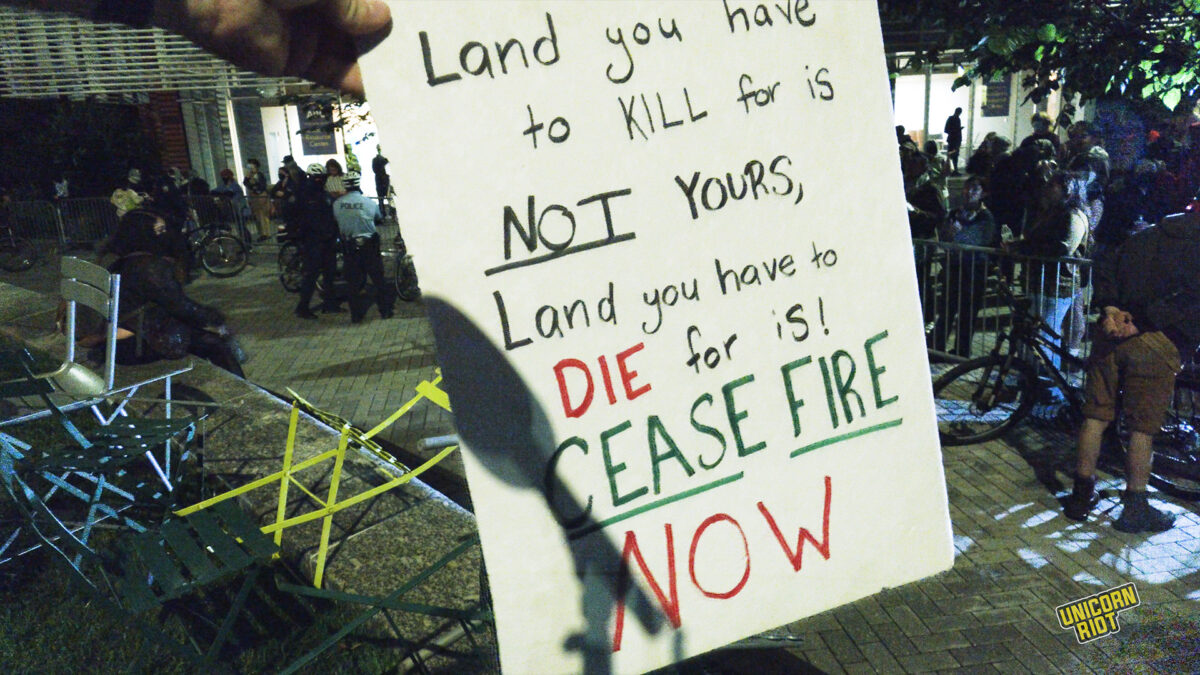
In interviews on-site students said that they were pushing to get Drexel to pull its investments from BlackRock, which does business with Israel, as well as other divestments. They also said that Drexel administrators have claimed it is illegal to disclose specific investments, but this is apparently not illegal at all. The Drexel Palestine Coalition has a list of demands posted online.
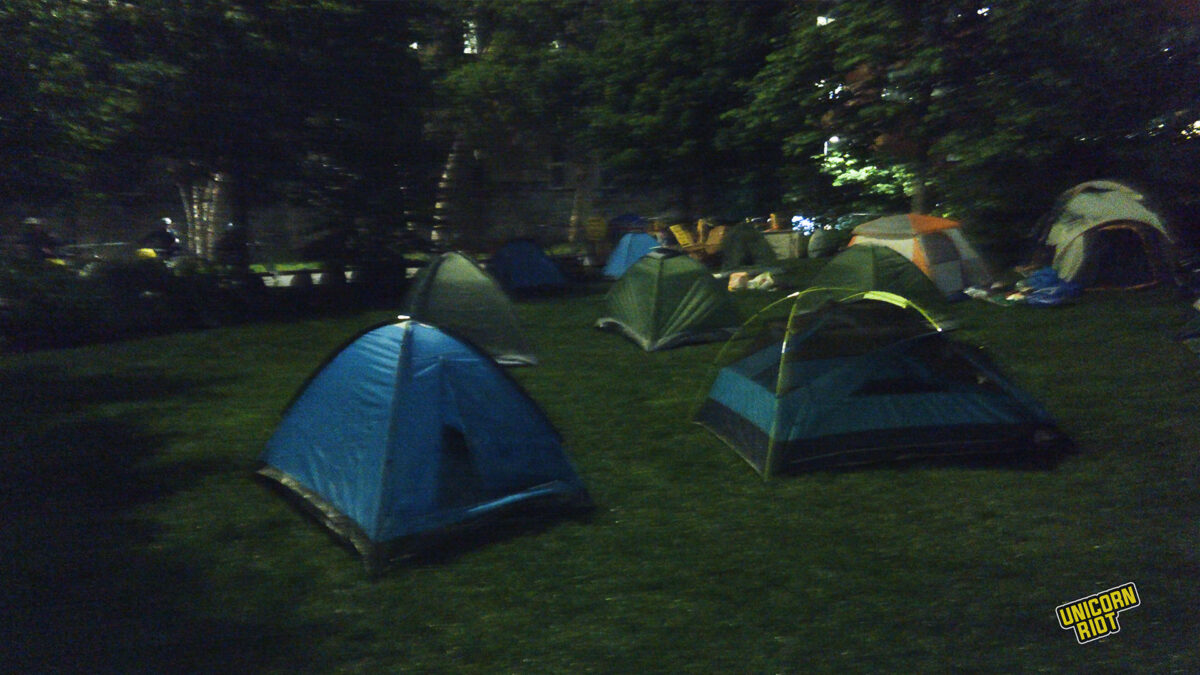
Drexel announced that it would switch to online learning for Monday.
During late Saturday night, police were largely a static presence while dozens of students milled just outside the perimeter discussing politics and playing music. A lengthy know-your-rights training with Up Against the Law and National Lawyers Guild members also took place with most of the camp participants.
Camp supporters regularly handed supplies including stacks of pizza, large tent structures and medic supplies over the barricades without much interest from the police. A Unicorn Riot reporter stuck around until the morning as a police sweep seemed possible (UPenn’s encampment was cleared in an early morning maneuver).
While the encampments might seem like a typical exercise in campus politics it should be noted that these activities are regarded as a strategic threat to Israel because they could shift the intellectual climate in the United States, which is Israel’s main international patron. A series of articles by James Bamford in The Nation has shown that groups like the Israeli-American Council and Canary Mission are closely coordinating with Israeli government agencies to crush student protests in the United States by harassing protesters.
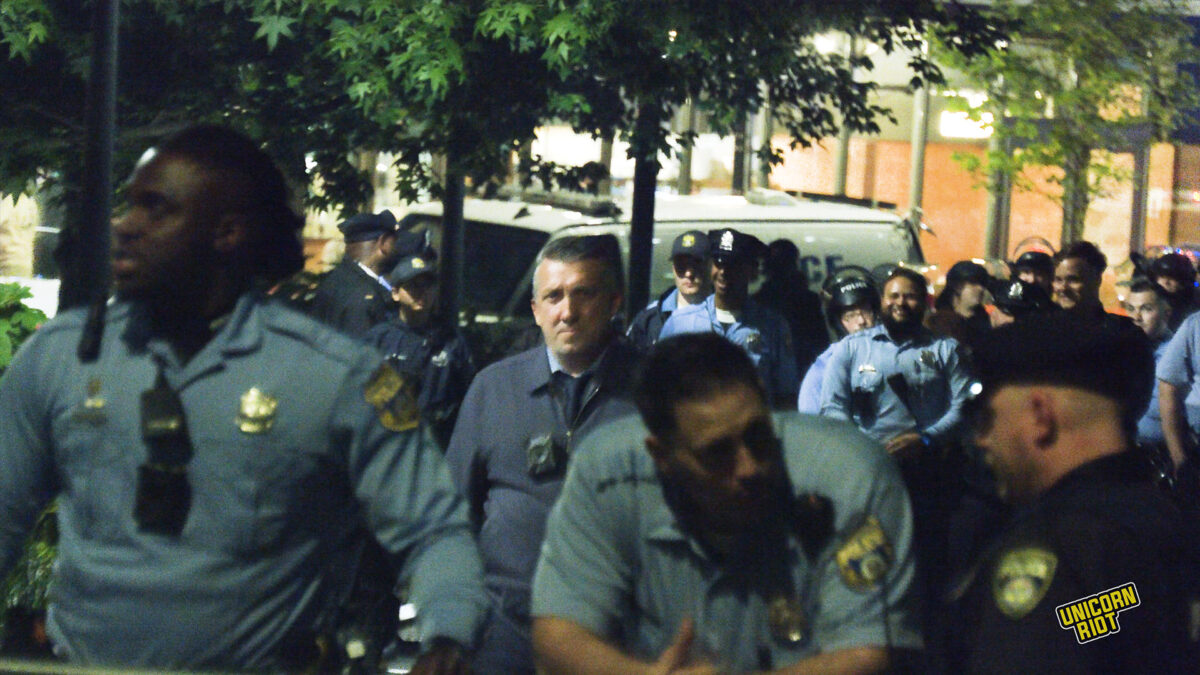
After the shocking events at Kent State and Jackson State, in September 1970 President Nixon’s Commission on Campus Unrest, chaired by Pennsylvania Governor William Scranton, dropped its report (418 page PDF). One result was the rise of campus police departments.
As the Penn Disorientation Guide outlines, police forces multiplied during the campus crackdowns of the 1970s, until today:
“If you walk west down Market St. from 30th St. Station, in 1.5 miles you pass through the jurisdictions of six police departments: Philadelphia, Amtrak, SEPTA, Penn, Drexel, and Philadelphia Housing Authority (PHA).”
Campus police in this side of the city (Drexel & UPenn) have demarcated “patrol zones” which extend into the city.
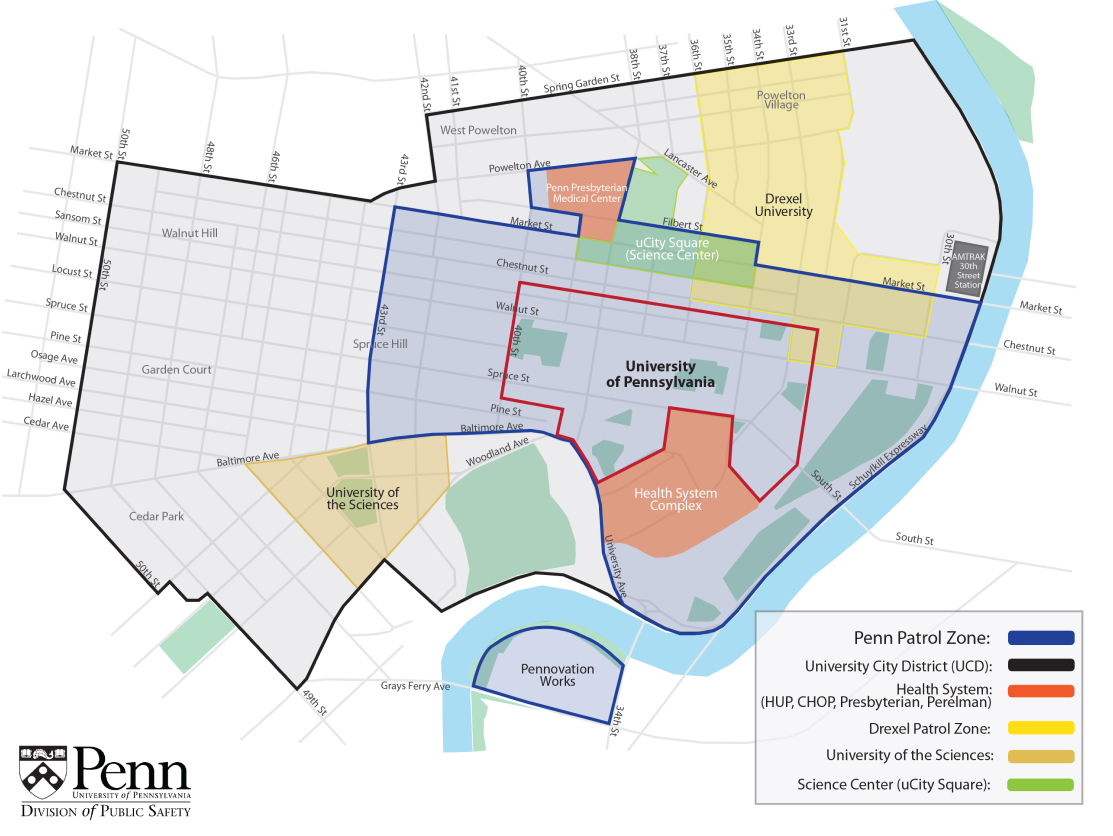
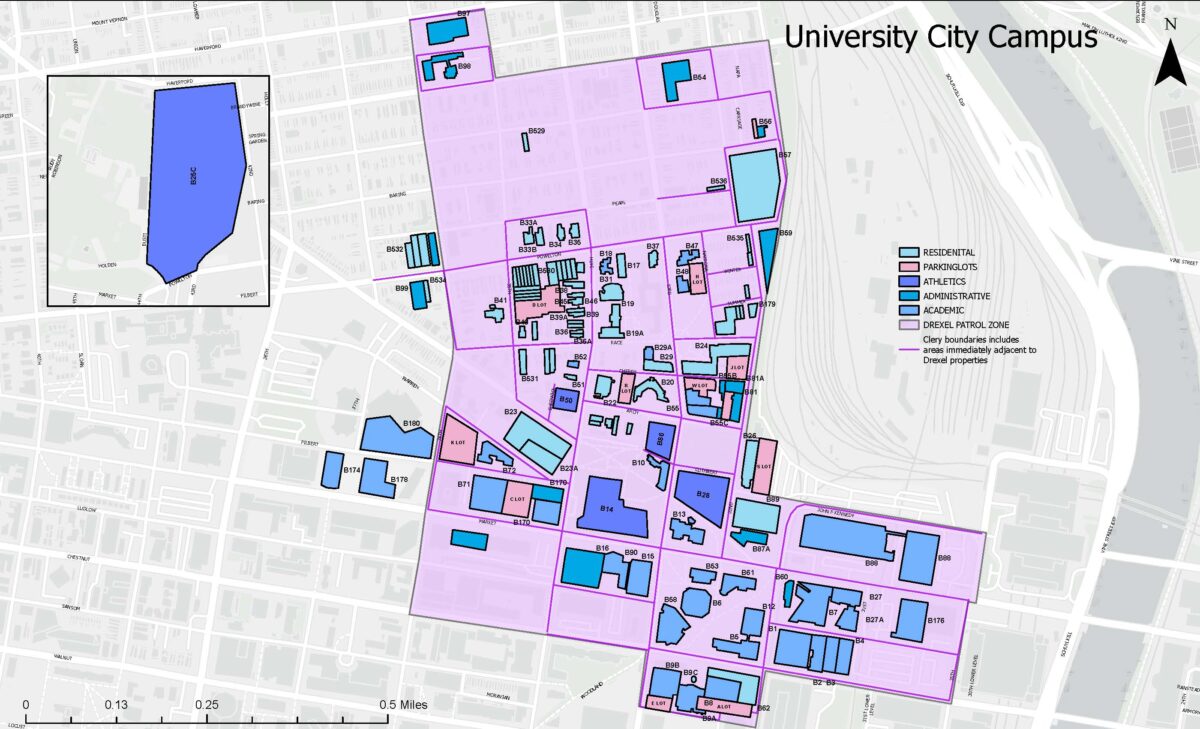
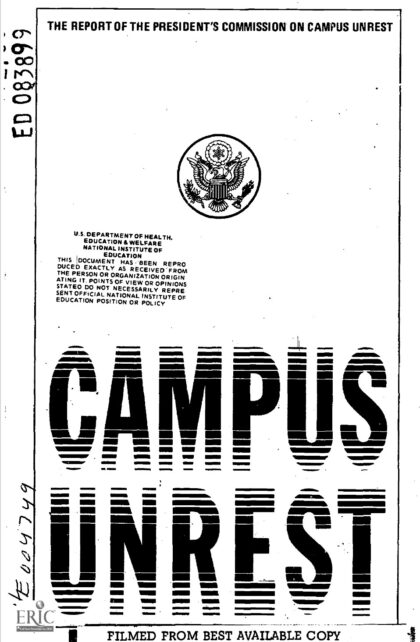
Related: UPenn Students Arrested at Palestine Demo After Building Occupation Attempt [May 18, 2024]
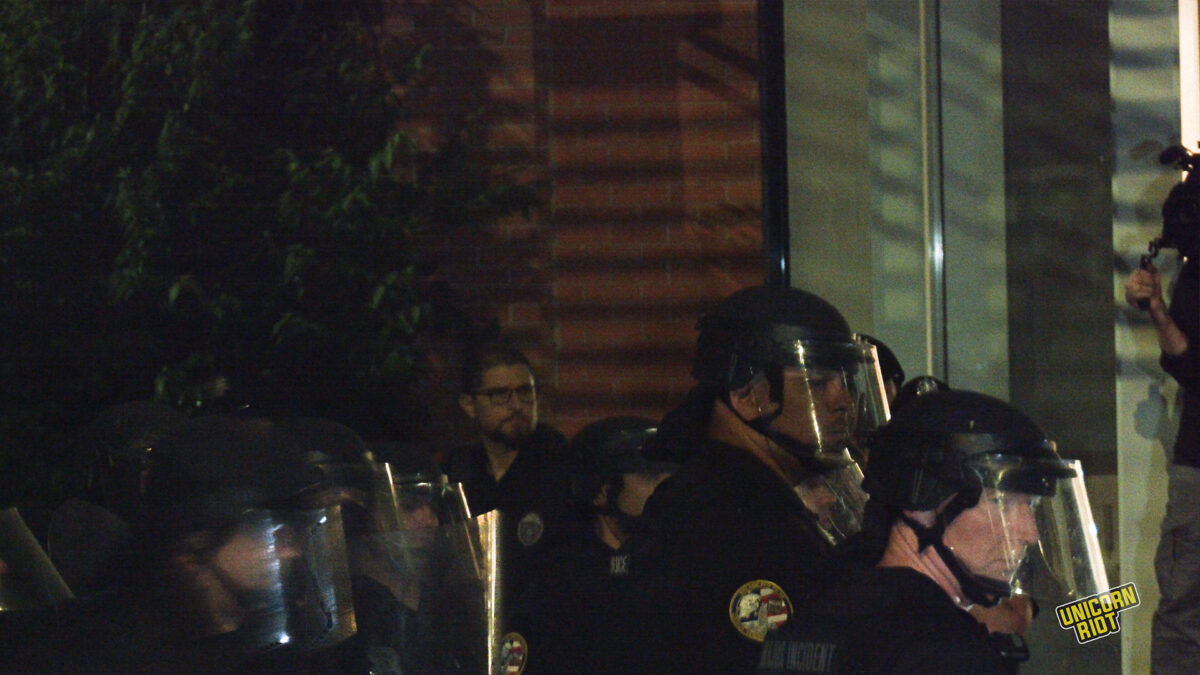
Social media clips and camera operation in latter sections of the livestream by Chris Schiano.
Submission
1. Shoutout to the Drexel students. Within a day, they have proven themselves to be braver and more interesting than the Penn encampment which remained mostly symbolic and toothless for its duration (apart from the students who tried occupy the building). The anti-police energy was palpable. The students took the initiative by breaking down barricades and braving facing down riot cops on the first night as well as shouting down other self important activists telling people to “be peaceful”. Additionally, the Drexel students wrote a wonderful response to President John Fry by embracing outside agitators, supporting disruption and rejecting narratives of “peaceful” protest.
2. As an anarchist, the ferocity of these Drexel students surprised and excited me. Generally, I’ve felt that the Palestine solidarity protests (whether organized by PPC or students) in Philly have been pretty tame and cowardly compared to the occupations and battles in the streets we’ve seen in other cities. However, I think that occupations/encampments are a limited tactic. I’d encourage students to explore other types of tactics to attack the university that allow them to “be water”. Stay in one place until it makes sense to move. In Portland, comrades abandoned their occupation of the library when it was clear they couldn’t hold it. Strategic retreat is real and valid. There’s no point in getting arrested or catching charges for nothing. Mass arrests are cute for activists on instagram but they don’t make any sense for those of us trying to #EscalateforGaza. Live to fight another day. Targets exist everywhere.
3. Develop good security culture. One thing I noticed about the encampment at Drexel that was quite different than the Penn encampment was that way more people were wearing masks and bloc clothing. That’s dope. Keep it up. Also, maybe don’t bring your phones to actions. Phones are cops and full of info. Also, pulling out their phone seems to be something that people were doing rather than actively participating in the situation. I heard someone yell “put your phones down” and I agreed with what they said. Maybe read some zines together about security culture.
4. Don’t listen to activists or self proclaimed organizers. You got this. Ya’ll occupied it. Not them. When me and my homie were rolling up on the encampment one thing we noticed was that all of the well known activists with megaphones were leaving as soon as night rolled around. That’s good. Those people are cowards. As soon as the barricades started moving and the riot cops come out, the people who are the loudest on instagram will be the first to bolt. Drexel encampment was refreshing because unlike the Penn encampment, it wasn’t a whose who of shitty Philly activism. Focus on skill training and discussion groups rather than letting academics who want to use your movement for their own clout have a platform.
5. Understand that social movements are like waves. Eventually this one is gonna come to an end. So be ready for that. Be ready for the repression. But fight as hard as you can now cause #EscalateForGaza is the mission.
Submission
At approximately 7pm on Saturday May 18, and one day before the birthday of Malcolm X, a Nakba Day rally and march ended in protestors and students spontaneously setting up an encampment at Drexel University, at Academic Quadrangle. Immediately, more than a hundred protestors locked arms to defend the students. This was the second pro-Palestine protest in two days, Friday’s action having ended in several violent arrests by the Philly Pig Department (PPD) in a similar attempt to occupy a space.
Shortly after, the resilient encampment defenders began jotting down phone numbers (on their arms) for attorneys, civil rights groups, etc.
Of course, PPD wasted no time calling in reinforcements by the barn-load, a few of them already decked out in riot gear, reminiscent of the genocidal IDF. It should then come as no surprise to learn that Amerikkkan cops receive training from their Zionist buddies in Isntreal.
As the sun went down, the pigs moved in. Several encampment defenders and even legal observers were threatened with a taser by an angry member of Philly’s “finest”; one of his partners yanked him backward before he pulled the trigger. There were several other minor altercations as well.
One can’t help but notice how the violence at protests and encampments begin and end solely with the brownshirt jackboots of the State. From capitalist cops to so-called “proletarian cops,” the role of all law enforcement has been the protection of private property and defense of genocide and colonialist supremacy since the days of Amerikkkan runaway slave patrols.
At the time of writing this, the encampment is ongoing and needs support. Philly Palestine Coalition on Instagram (@phillypalestinecoalition) will be providing updates for mutual aid, jail support, etc.
To fellow anarchists, we urge you more than anyone to show up. Bring food, water, clothes, zines, but more importantly, bring YOURSELVES. Support our comrades in the streets and the encampments. In order to live in a better world, we need to create a better world. No party will save us or bring the revolution. As one protestor continuously remarked, “We protect us.”
Anarchy is forever.
Death to the zionist state.
From the sea to the river, Palestine will live forever.
Submission
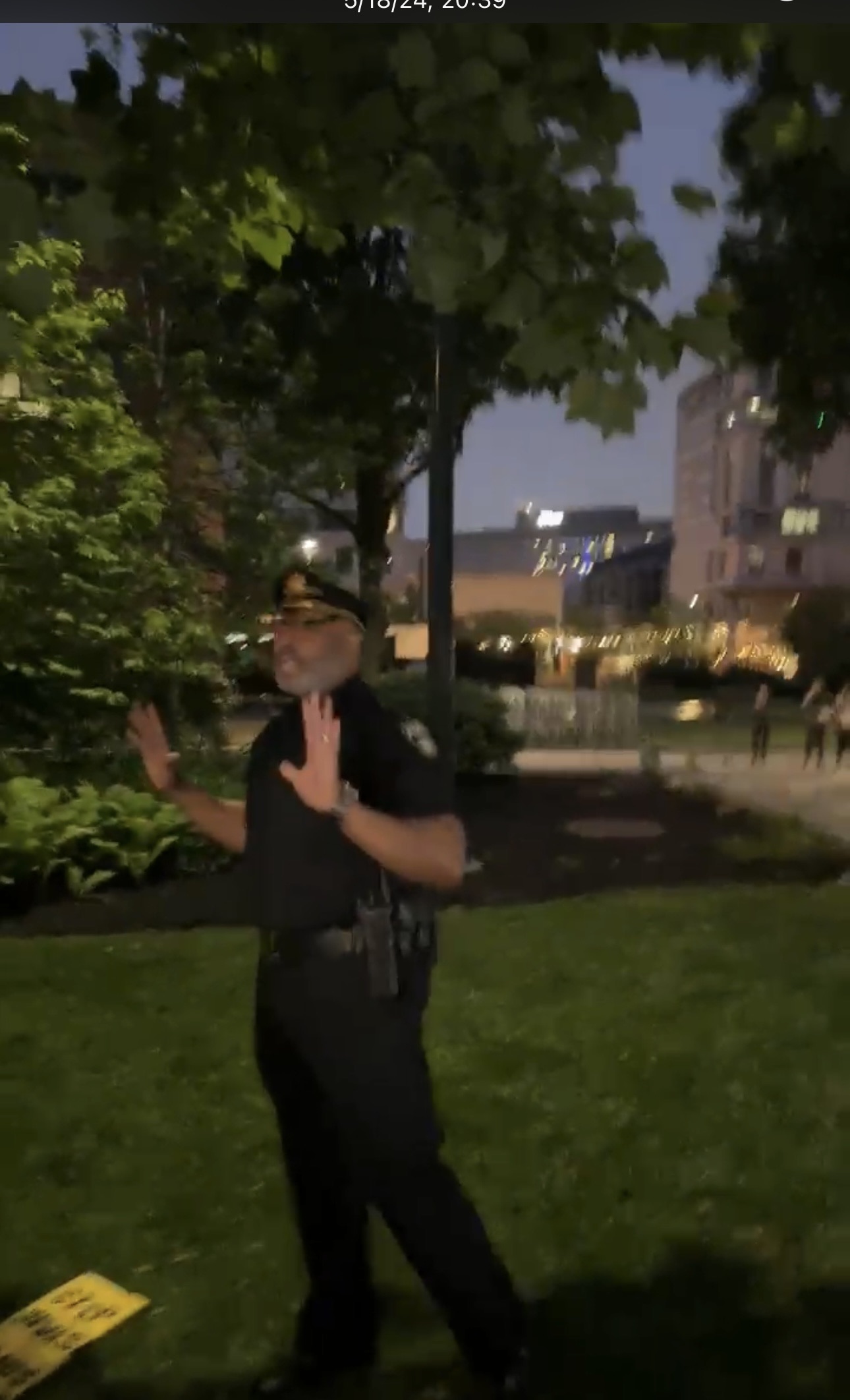
from Unicorn Riot
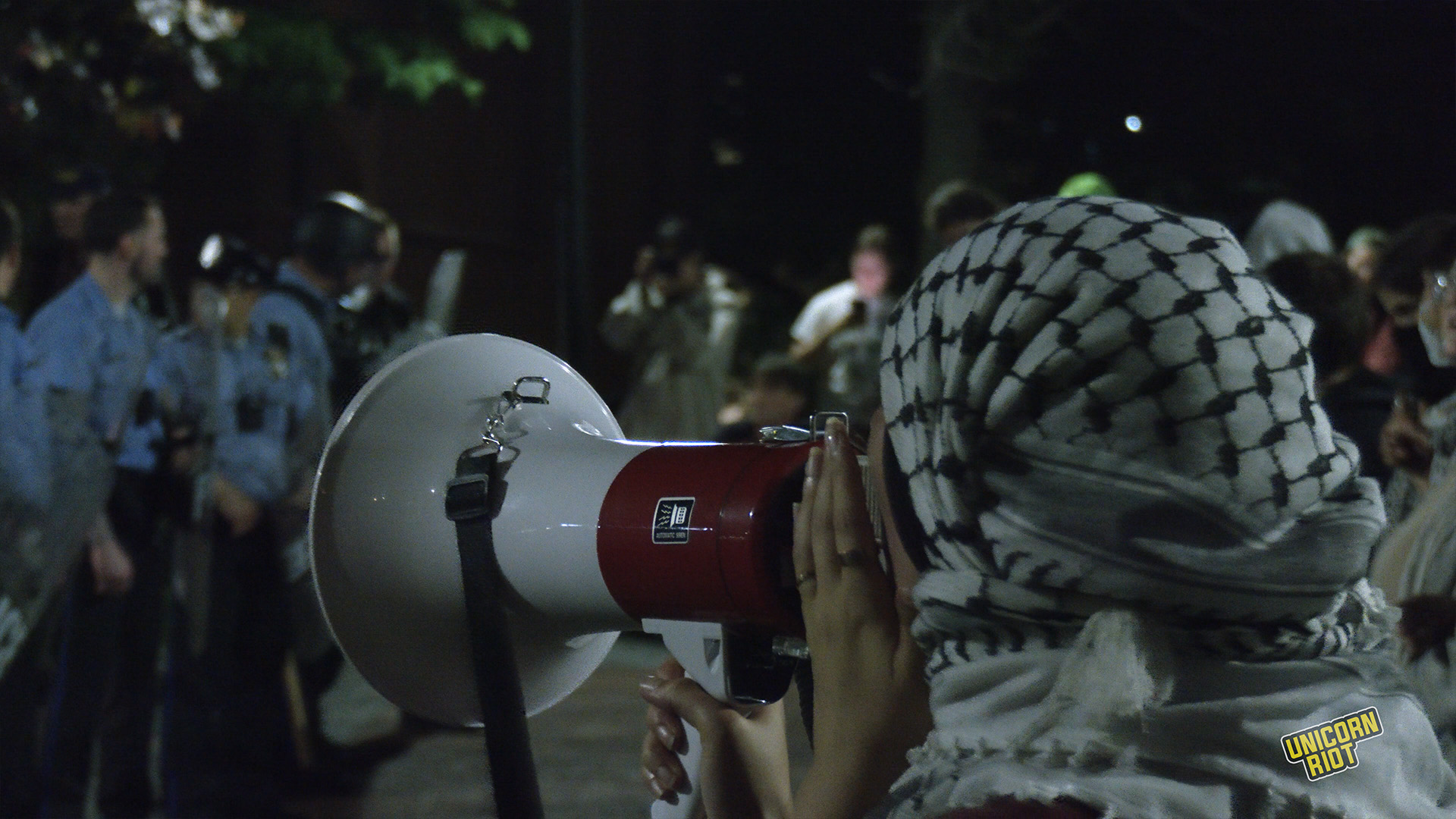
Philadelphia, PA – Nearly twenty University of Pennsylvania students and supporters were arrested after briefly occupying Fisher-Bennett Hall along 34th Street Friday night. Officers including UPenn’s Emergency Response Teams worked to shove hundreds of pro-Palestine demonstrators away from what they renamed Refaat Alareer Hall. (Alareer was a prominent Gaza professor killed by Israel late last year.) UPenn has also been a site of rallies against Ghost Robotics, an incubator spinoff company that has fast become a key world supplier of military robots including for Israel. We heard that the action was an extension of the UPenn protest encampment organizing that was swept by police action a week earlier, and was aimed at forcing UPenn to divest from companies that do business with Israel.
Philadelphia, UPenn, Drexel and SEPTA Transit Police were all activated during the evening’s events, and the Philly PD “Counter-Terrorism” team which often shows up at demonstrations was also spotted.
According to student reporters UPenn Police were seen with evidence bags at Fisher-Bennett.
Unicorn Riot was live for much of the street demo on 34th Street and after. Full live video stream (YouTube):
Legal observers and other members of the media were shoved away from the scene; approximately 18 people were arrested; at least two people were reportedly tasered, however this is not confirmed.

UPenn cleared the Palestine solidarity camp a week earlier; a similar action at the University of Chicago on Friday led to the occupation of the Institute of Politics building.
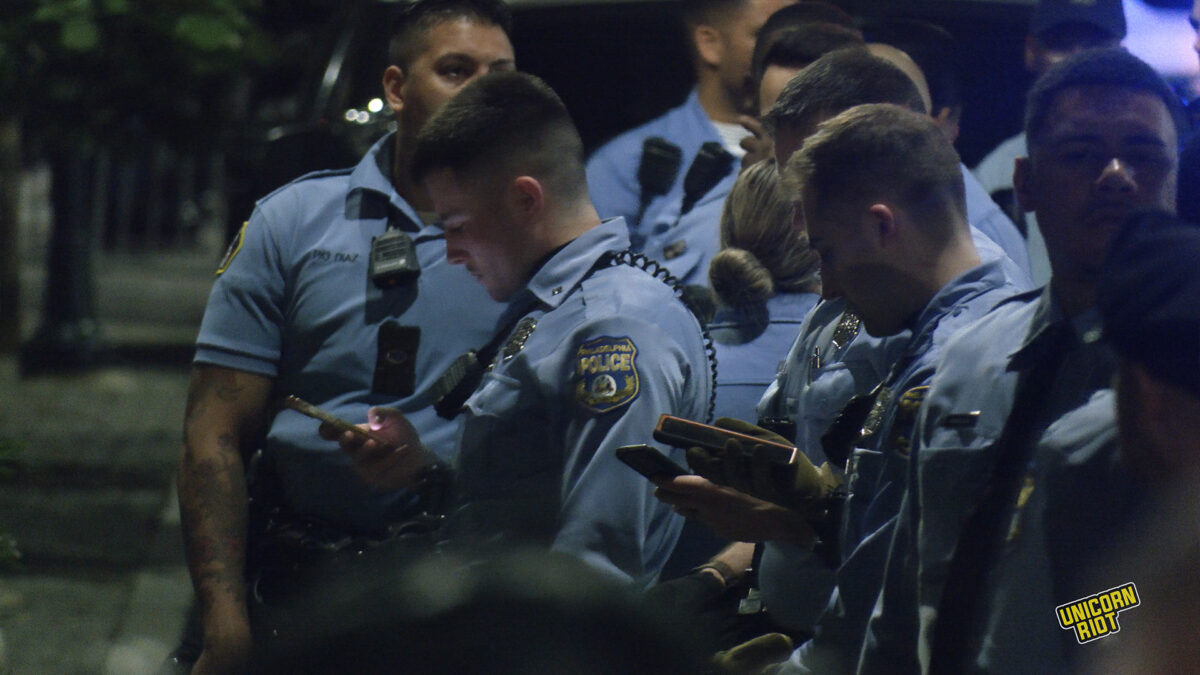
Law enforcement largely controlled 34th Street most of the time.
The arrival of another set of demonstrators on the west sidewalk after it had already been cleared, brought cheers from the crowd:
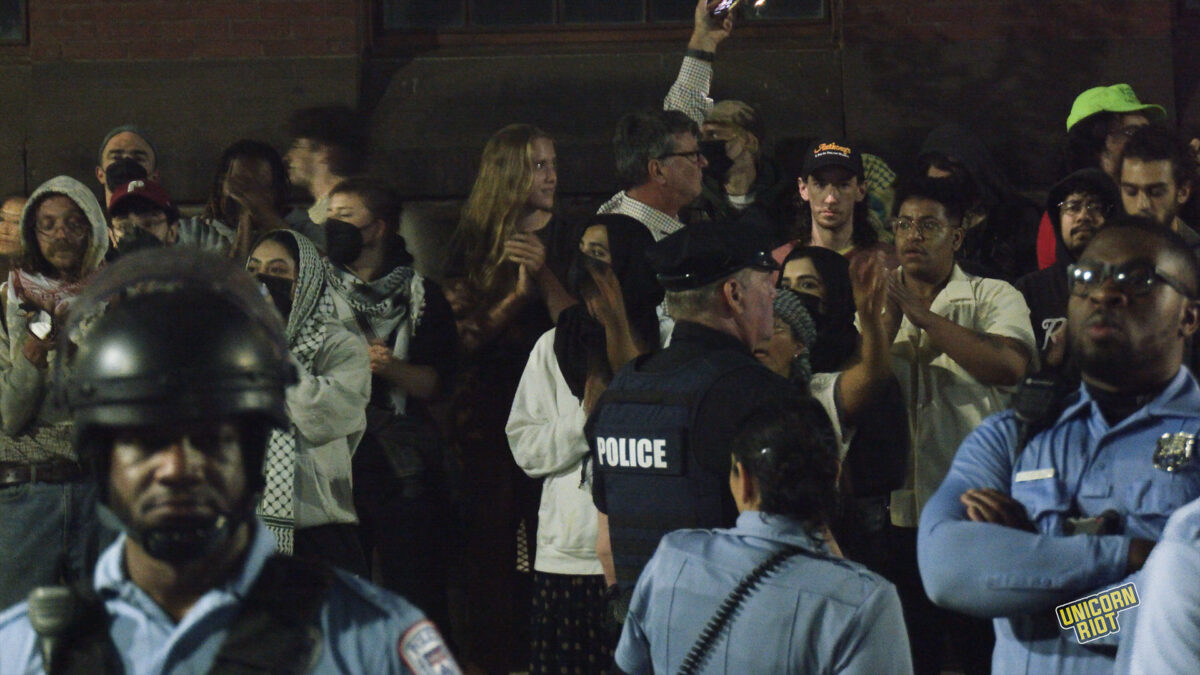
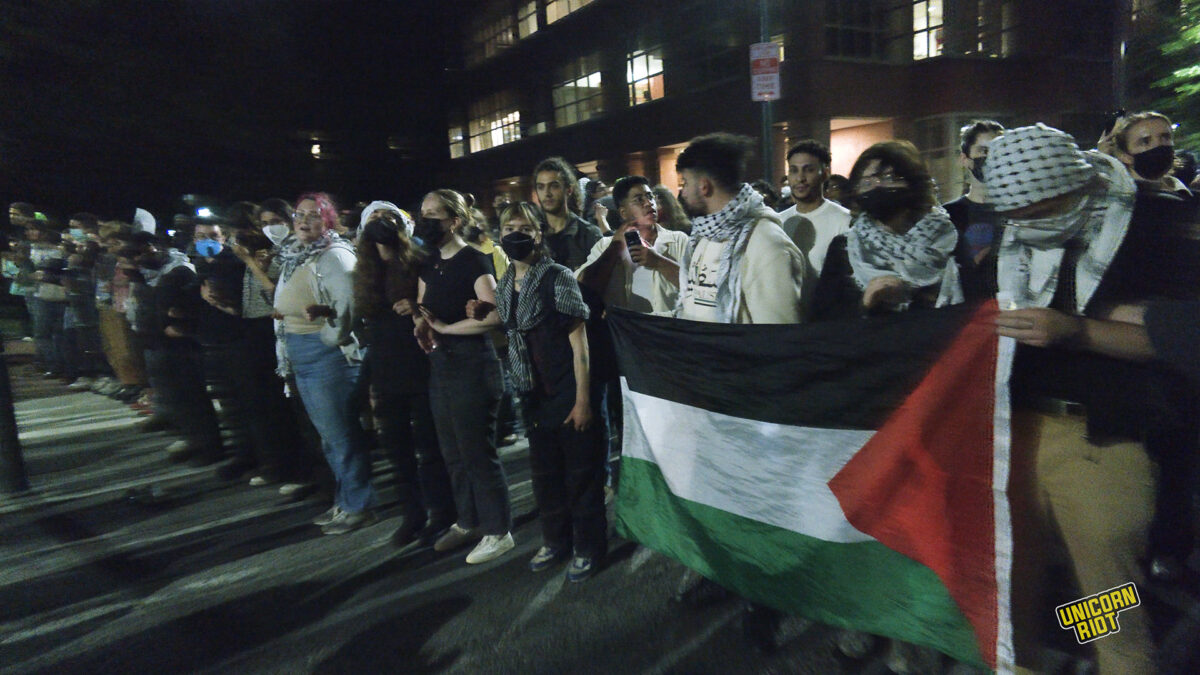
The police moved their lines south in a couple steps away from the hall and tried to isolate the crowd onto the east sidewalk. However, the crowd took 34th Street then, moving quickly, turned east onto South Street and down to the Penn Museum alumni weekend event.
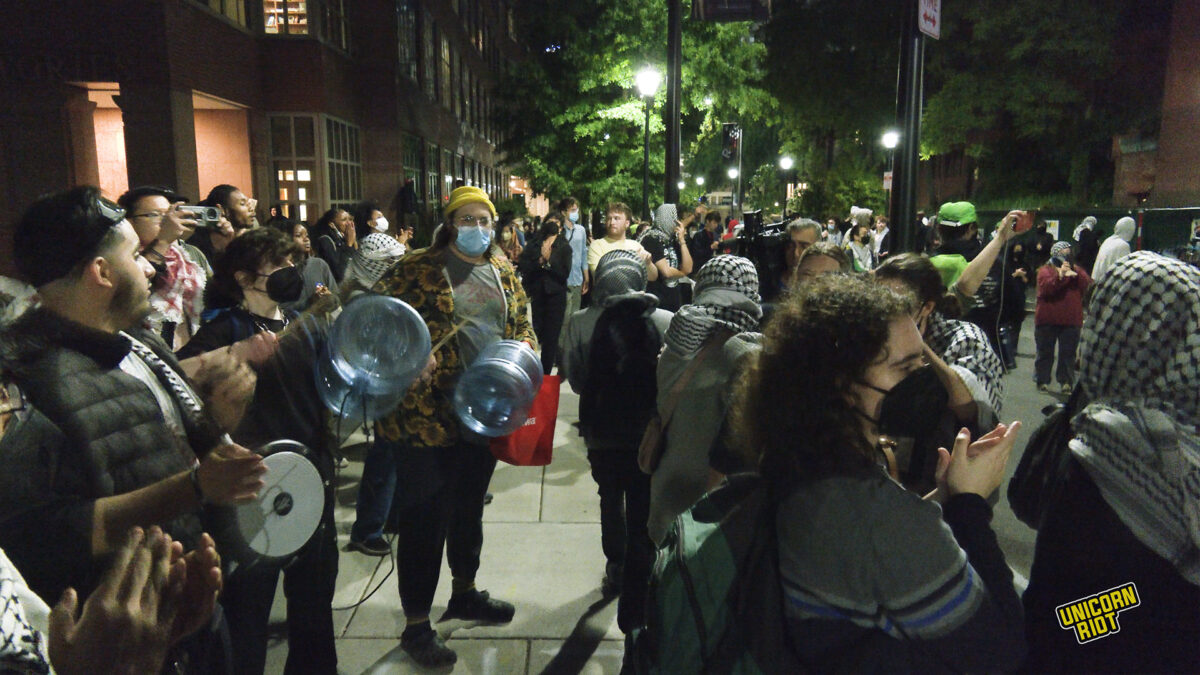
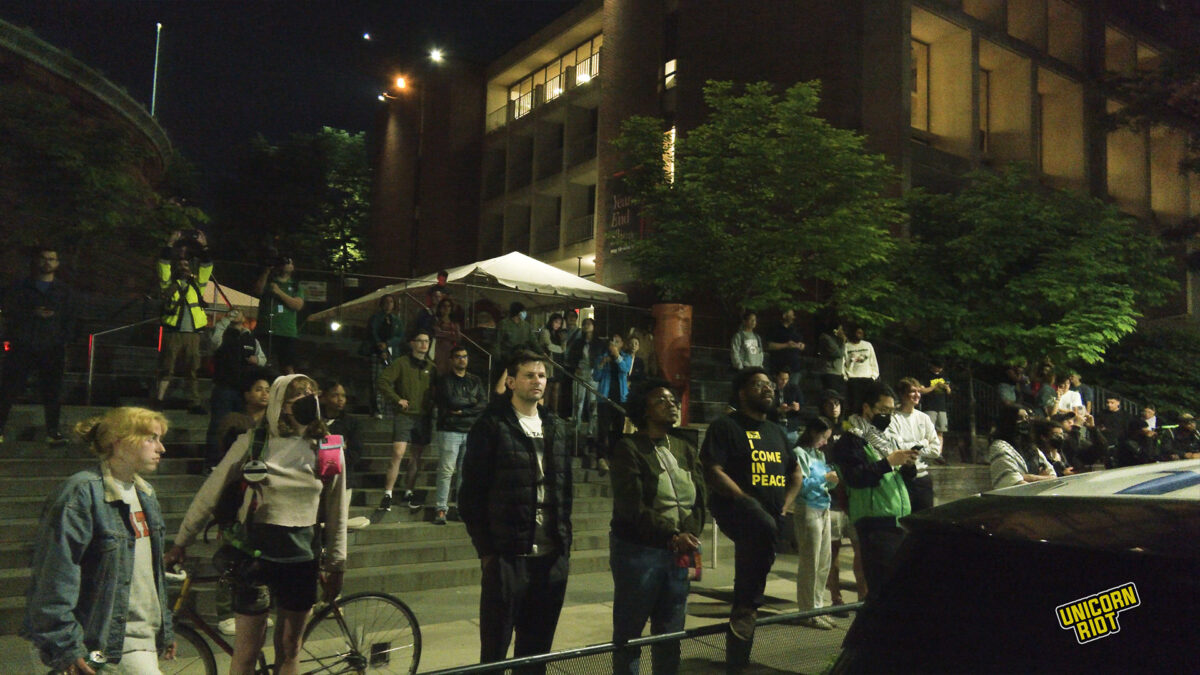
The vast majority of officers didn’t seem to tail the demonstrators to the museum — showing the utility of cat-and-mouse moves that are difficult for burdened police units to match. (This is one reason the cavalry-like mobile field force program continues to be America’s leading, standardized anti-protest planning template — it is designed to get ahead of, and split up, quick protest formations.)
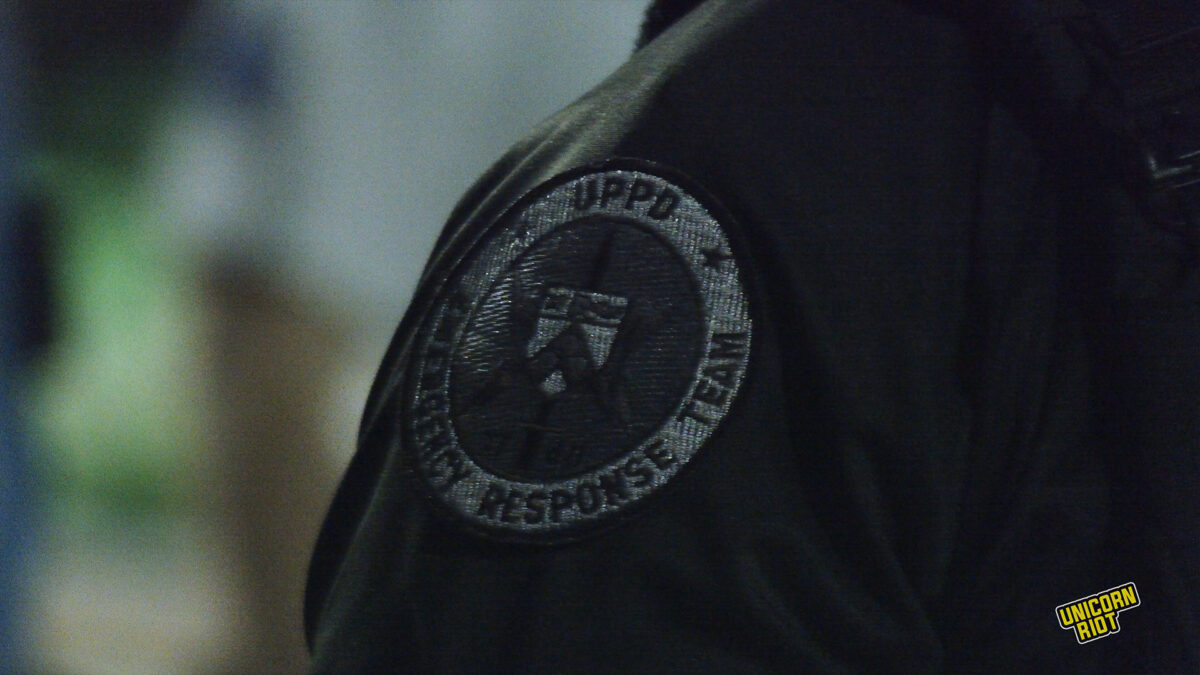
Besides the UPenn Emergency Response Teams, SEPTA Transit Police, and Drexel campus police also activated. A Drexel officer was spotted assembling zipties.
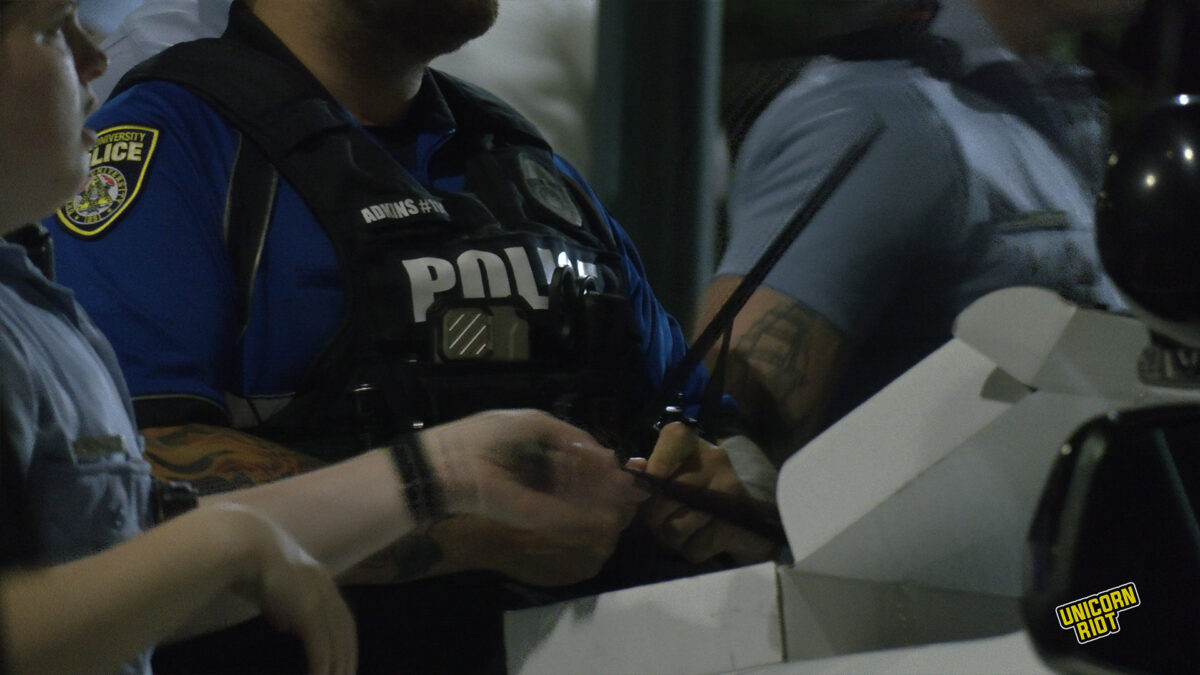
Unicorn Riot heard from one demonstrator that an international student was barred from their dorm room earlier without reasonable options to retrieve their possessions — similar to other tactics seen recently in other campuses.
As of May 9, six UPenn student organizers were put on mandatory leaves of absence. We also heard that more recent disciplinary messages had just been sent out which might have chilled participation on Friday night.

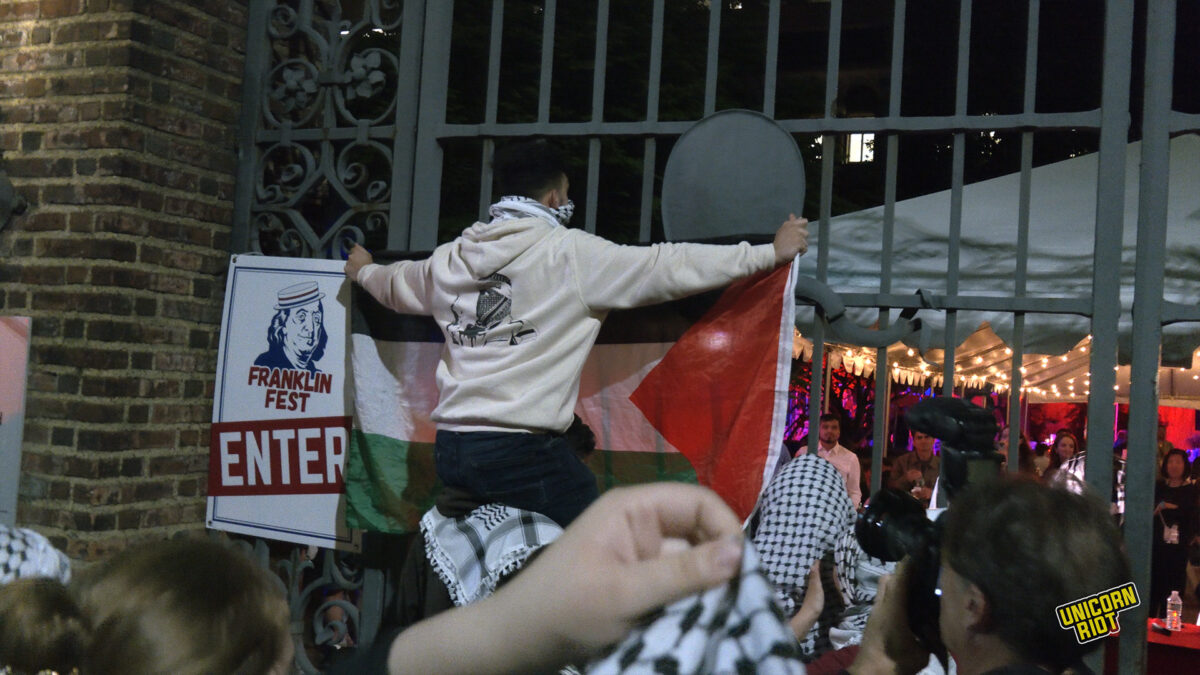
According to a series of updates by the Daily Pennsylvanian student paper, the alumni event was closed down around 11 p.m. after the protest encounter at the gate. Demonstrators dispersed and dozens headed to jail support to Philly police headquarters at 400 N. Broad Street.

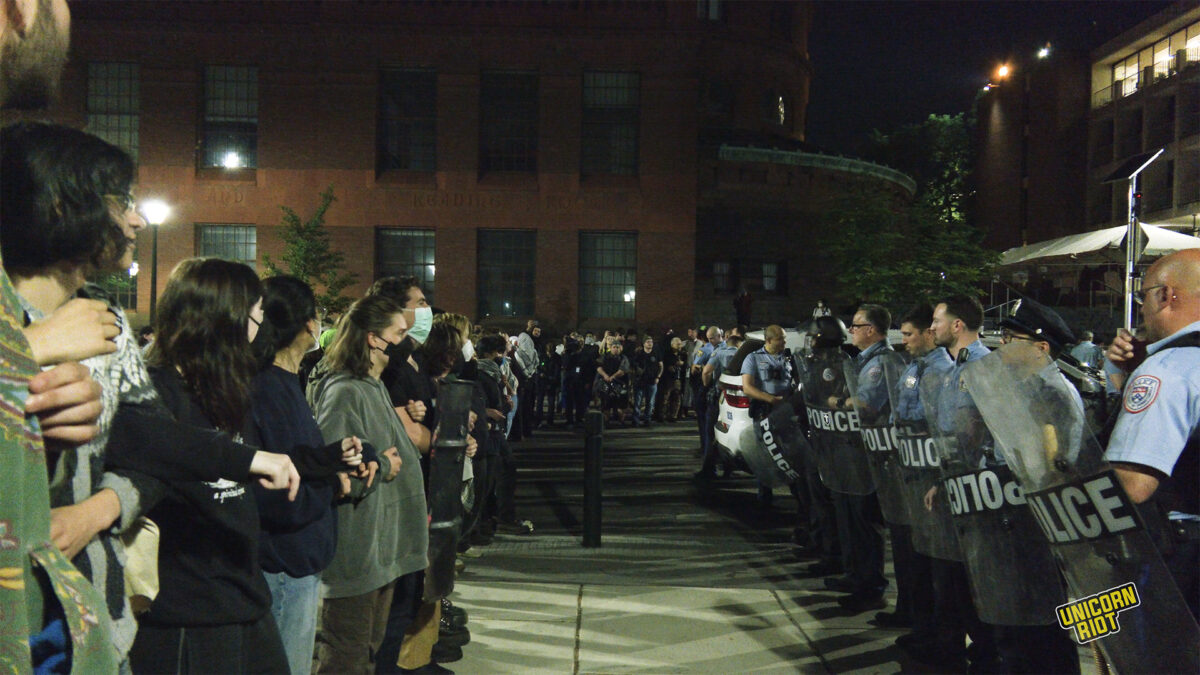
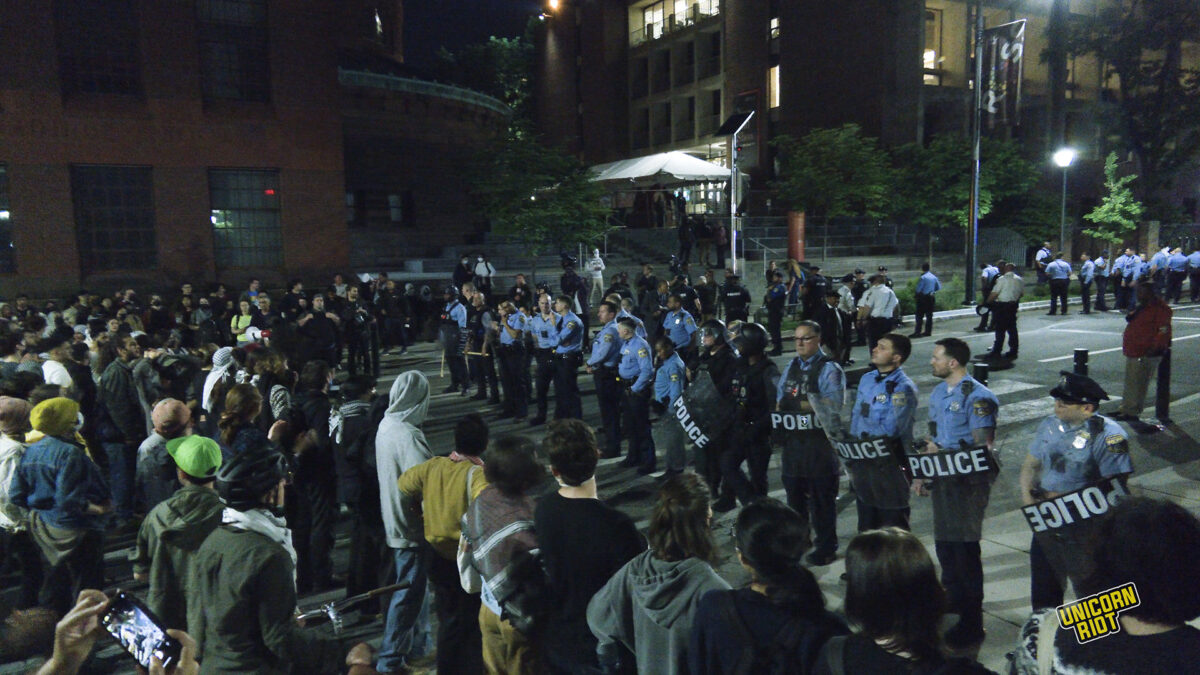
Social media clips and live video camera operation for the second half of the event by Chris Schiano.
For more from Palestine and pro-Palestine protests click on link below.
Submission
This week, an anti-colonial uprising broke out in Kanaky, an archipelago in the South Pacific. Kanaky was named “New Caledonia” by British colonizer James Cook and has been occupied by France under that name since the 19th century. The Kanaks are black indigenous peoples of the islands whose cultures face genocide from white French “immigrants” who drive them from their lands and impose capitalism. For more general information:
https://www.infolibertaire.net/?s=Kanaky
France is a member of NATO, an ally of Israel, the capital of anti-immigration racism in Europe, a nuclear-armed state, etc. By attacking France, we support not only Kanaky’s struggle for freedom but also that of many other peoples, including other French colonies in the South Pacific. and Caribbean.
If you live near a city, you probably live near a French political, cultural or diplomatic institution or a company that does business with them. You probably like under a government which maintains links with France. Targets are everywhere!
Solidarity means attack, the lessons we learned in the fight against genocide in Palestine, Sudan and Congo can be applied at the same time to those pushing for the French-led genocide of the Kanaks.
Black Power Worldwide! Death to France!
Submission
Calling all neighbors, organizers, radicals, militants, anarchists, outside agitators, and people of conscience to converge upon the UPenn Gaza Solidarity Encampment.
The students, faculty, and neighbors who initiated the occupation on Penn’s campus took a definitive step toward liberation for the people of Palestine, and all victims of colonization and imperialism the world over. This cannot be debated, and their actions should be applauded. However, over the course of the past three days, it has become clear that the student organizers who have placed themselves in control of the encampment are ill-equipped to seize the moment. Whether guided by fear, inexperience, or liberal politics, the most outspoken among us have shown themselves to be hostile toward action and escalation. Respectability politics, “optics”, and fear have stifled any attempts to force UPenn to take the action seriously.
When a single meager spraycan expressed its discontent, organizers used umbrellas to block the slogan until campus staff could send a cleaning crew. ZIOS FUCK OFF. Later that day, Penn’s president declared a hate speech investigation, and set the stage for the encampment’s looming eviction.
History has taught us that this WILL end in conflict and violence, “peaceful protest” claims be damned. The same pigs who played soccer with children in the quad yesterday will be back with pepperballs and batons tomorrow. The students who are more interested in cosplaying as revolutionaries before finals start, than actually exerting pressure to approach meaningful change, are not prepared for this reality.
Materially speaking, the camp is full of tents, food, resources, and bodies. There is still an opportunity to escalate, but the window is closing quickly. Come join us before it’s too late.
Free Palestine
No Arena In Chinatown
Stop Cop City
Chinga La Migra
Abolish The Police
ZIOS FUCK OFF
Submission
So, there was an encampment that was sprung up on the Penn campus on Thursday, April 25th. Guess I love the enthusiasm? It’s being put on by a couple different orgs I’m thinking. One thing I know for sure is it’s definitely a young crowd. Which, is cool, love to see younger folx doing cool shit. N this is probably a lot of their first time doing a protest encampment. Unfortunately, there’s obviously some dumb shit. Like, they got fucking rules and demands and shit. Obviously as an anarchist, I don’t really vibe. But hey, fuck ton of food and other supplies. Hopefully people can come take what they need. And it was nice to see more than a few other anarchists in the initial taking of the space. But I did notice people already getting peace policed. Idk man, people should just keep that in mind. Other than that, maybe we can try and get it to be more direct in action or something. The fact these people only have a plan to GET arrested and none to de-arrest is beyond my understanding. Asking us all to be “nice to the cops” while being arrested… *Sigh* Honestly, we’re hoping that there’s room to get people here to be more confrontational. I won’t hold my breath.
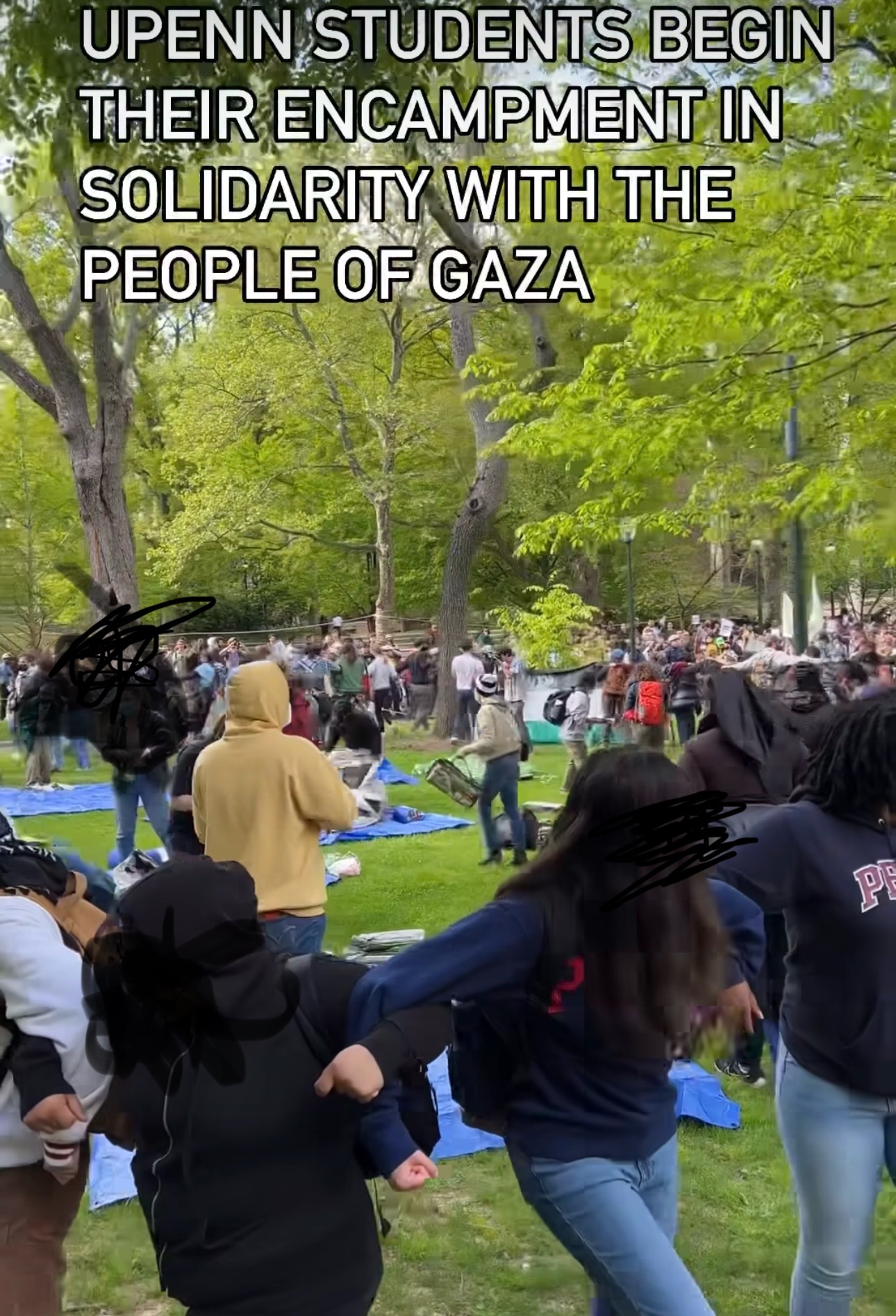
from It’s Going Down

As the A15 Actions account wrote:
Over 65 cities, 19 countries and six continents took collective risk for a liberated Palestine. This is just the beginning. Activists across the globe carried out large-scale actions Monday as part of A15, a coordinated economic blockade in solidarity with Palestine.
U.S. organizers blockaded factories and corporate offices of weapons manufacturers, including the Boeing plant in St. Charles, Missouri; Pratt & Whitney in Middletown, Connecticut; and the Lockheed Martin building in Arlington, Virginia.
Protesters took over major roads in Philadelphia and Oakland, while others rallied in front of government buildings and cultural sites. In San Francisco, activists shut down both sides of the Golden Gate Bridge in a major disruption to traffic in the Bay Area.
Activists in New York marched across the Brooklyn Bridge and rallied on both the Brooklyn and Manhattan sides of the iconic bridge. Dozens of people were arrested in the peaceful action, including reporters covering the protest.
Across multiple cities, police made hundreds of arrests and in Fremont, shot off projectile weapons in an attempt to stop demonstrators from blockading a Telsa factory. Just as they did under Trump, Republican bureaucrats like Tom Cotton called for far-Right vigilante violence against demonstrators stating, “I would encourage most people anywhere that gets stuck behind criminals like this who are trying to block traffic to take matters into their own hands [and] put an end to this nonsense.” In the face of the success of the A15 actions, many pundits on the Right and neo-liberal Center have also started a fear mongering campaign about the movement using “escalated tactics,” while student organizers continue to face expulsions, evictions, and repression.
Philadelphia, PA: Demonstrators in Philadelphia organized blockades and marches across the city. According to Unicorn Riot, “The crowd marched to the offices of arms manufacturers Day & Zimmerman, who provides components for weapons being used by Israel against Gaza.” A report on social media wrote:
The demonstrations began at 8:15 a.m., when dozens of protesters disrupted rush hour traffic as they waved Palestinian flags during a teach-in. Simultaneously, another group led a funeral procession of cars up I-95, while a third marched near City Hall, stopping at various locations to call attention to connections between Philadelphia’s economy and Israel’s occupation in Gaza.
The Philadelphia Police Department confirmed that 67 people were arrested for obstruction of highway during the morning protests. Officers issued civil citations to 41 demonstrators, who were then released from custody, said Sgt. Eric Gripp, a department spokesperson.” Philly Inquierer: https://www.inquirer.com/news/philadelphia/protests-gaza-palestine-irs-building-university-city-20240415.html
“In Philadelphia, people across the city took part in #PhillyA15 coordinated actions aimed at disrupting the local economy and blockading major traffic routes on the East Coast to demand an end to the genocide and occupation in Palestine being carried out by the apartheid government of Israel. Key weapons manufacturer, Day & Zimmerman, and Philadelphia City Hall both went on lockdown as a result of these actions.
Over 50 people blockaded the major intersection at 30th Street and Schuylkill Avenue, effectively stopping traffic on 76 in both directions. Across town a coordinated funeral procession mourning the slaughter of more than 38,000 Palestinians—including over 14,000 children—slowed traffic on both 95 north and south bound to a near stop, while Philly Palestine Coalition took to the streets in center city with 200 people who walked out of work in solidarity with the worldwide, coordinated economic blockade #A15. Sixty-nine people were arrested.
The Philadelphia economy is complicit in this ongoing genocide. In 2023, $23,657,015 of Philadelphia’s tax dollars were sent to Israel. Philadelphia is also home to weapons manufacturers Day & Zimmerman, General Dynamics, Lockheed Martin, Boeing, L3Harris, and Ghost Robotics who manufacture weapons of war that have been used by Israel.
It is within our collective power to stop this genocide. More importantly, it is our collective responsibility to do so. Find your humanity in the struggle! #PhillyA15 is everywhere, every day, until Palestine is Free! #a15forpalestine